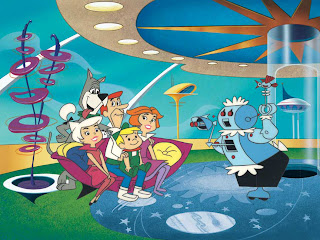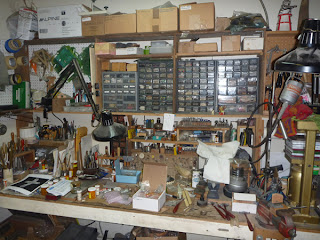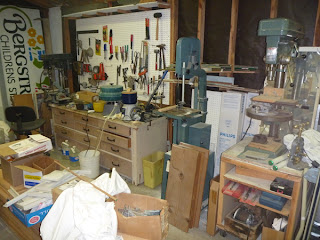This month's Blog Carnival** asks us for memories of 2011.
If you’re like us, round about this time every year you get
plagued with lots of people looking back at the events of the last 12 months
and wondering “what the f**k just happened?!”
These usually come in the form of Christmas cards containing
retrospectives from relatives and other people you don’t know or are trying to
avoid.
As fascinating as a detailed description of the family pet’s
intestinal antics for last year are, we thought that a brief review of the last 1000 years
might be helpful and offer more perspective on just what did happen in 2011.
Caveat: The following is history. You can't make up stuff this crazy.
1011
Not much happened this year. Bernard I, Duke of Saxony died.
He is noted for supporting Otto III over Henry the Wrangler for succession to
the throne of Germany. Picking your political candidates was much easier in
10ll.
1111
Pope Paschalis II crowns Henry V, Roman emperor. Back to stinky business as usual with all the scheming, scandal, intrigue and betrayal you know and love in modern politics. In 1111 the political phrase “sticking a knife in your back” had a different meaning than it does today, but the results are the same.
Pope Paschalis II crowns Henry V, Roman emperor. Back to stinky business as usual with all the scheming, scandal, intrigue and betrayal you know and love in modern politics. In 1111 the political phrase “sticking a knife in your back” had a different meaning than it does today, but the results are the same.
1211
1211 celebrates the birthday of Henry VII, who’s reign set a
new benchmark for greed and corruption. Considering his predecessor was Richard
III of Shakespearean villainy fame, that’s a big benchmark. His son, Henry VIII
took over the family business and went on to become the patron saint of divorce
lawyers.
1311
Battle of Halmyros: The Catalan Company defeats Walter V to
take control of Athens. 2011 marks the 700th anniversary of a corporation
overthrowing a government. This is what happens when you don’t pay the utility
bill.
1411
Battle of Harlaw, one of the bloodiest battles in the
history of Scotland, was basically a real estate deal gone bad that went on forever – with no clear winner. It set the
tone for real estate law for the next 600 years.
1511
Spain and England decide they don’t like France and hire the
Swiss to kick their asses. Well, actually it was the Italian’s who didn’t like the
French, but they convinced Spain and England it was their idea. The Swiss were only in it for the money.
Things didn’t go so well, and when the money ran out so did the Swiss. Which is why the national motto of
Switzerland today is “mind your own business”.
1611
Henry Hudson, looking for a route from England to China
discovers the coincidently named Hudson Bay and the New York metropolitan area
instead, inadvertently founding Chinatown. Hudson’s crew votes him worst navigator of the
year and promptly sets him adrift in Hudson Bay. Years later the marketing
efforts for the Hudson automobile suffer roughly the same fate.
On a brighter note,
the word "telescope" is invented in 1611 by Prince
Federico Cesi, replacing the commonly used term “thingamajig”.
Shakespeare releases the 3D version of the
"Tempest".
1711
Charles VI Habsburg becomes king of Austria, and starts the
women’s rights movement and a subsequent 12 year international war disputing
women’s rights, which is how the nation of Serbia and Gloria Alred was
invented.
A French corporation of investors invades Rio de Janeiro for profit. Led by bankrupt shipping magnate René Duguay-Trouin, they succeeded in taking the city hostage and walking off with 4 million in ransom. Ahh, the good old days of unregulated commerce.
1811
Timothy Pickering becomes the first U.S Senator to be censured
for publically revealing confidential government documents. Ooops, my bad. It
turns out President James Madison’s was involved in a stinky illegal land-grab annexation
of south Florida in collusion with a group of real estate developers. Pickering
trumps Wikileaks by 200 years.
Austria declares bankruptcy in the wake of excessive borrowing to finance a series of wars. It takes 25 years for the economy to recover, while the Austrian government prints lots and lots of worthless money.
Major earthquake hits New Madrid, Missouri, causing
widespread damage. Blame is quickly laid on flatulent Quakers.
1st US colonists on Pacific coast arrive at aptly named Cape
Disappointment, WA and establish a trading post and coffee shop.
1911
Orville Wright remained in the air 9 minutes and 45 seconds
in a glider at Kill Devil Hills, North Carolina. Later that same year the first
photo was taken, and the first bomb was dropped from an airplane. The first
transcontinental airplane flight from NY-Pasadena also took place, in 82 hrs 4
min with lots and lots and lots of stop-overs. Peanuts were served.
In business news, Belgian mining law introduced the concept
of a 9½ hour work day, while in the U.S, the Supreme Court dissolves Standard
Oil under the Sherman Antitrust Act, deeming it too big to continue.
In a bit of irony that keeps on rusting, the R.M.S. Titanic was launched at the same time the first US group insurance policy was written in Passaic, NJ. Draw your own conclusions.
In a bit of irony that keeps on rusting, the R.M.S. Titanic was launched at the same time the first US group insurance policy was written in Passaic, NJ. Draw your own conclusions.
A U.S. audience throws vegetables at actors on stage for first
recorded time in history as
NY receives its first Marconi wireless transmission from Italy. We’re sure these are related events …somehow.
NY receives its first Marconi wireless transmission from Italy. We’re sure these are related events …somehow.
The Tabulating Computing Recording Corporation (IBM) is started,
and Chevrolet officially enters the automobile market in competition with Ford.
Meanwhile the first old-age home is opened in Prescott, Ariz, and the first
public elevator is put into service. For our protection, the US sends 20,000
troops to the Mexican border, as the first Indianapolis 500 car race is run. Ray
Harroun wins at 74.59 MPH. Chevrolets are now built in Mexico, Ray Harroun is
living in an old age home and IBMs stocks are going up and down on a perpetual
elevator.
History marches on. If we could only remember where we put our
keys.
** Blog Carnival is a group-think project of EtsyMetal Team, an International cabal of jewelry designers and metalsmiths. Each month a number of us write on the same subject and you get to see how our entropied brains deal with it.















































